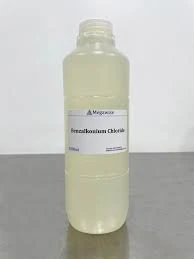Exploring the Benefits and Uses of CL and ME Isothiazolinone in Modern Formulations
Understanding CL + ME Isothiazolinone Applications, Risks, and Safety Measures
Introduction
In recent years, the chemical compound known as CL + ME isothiazolinone has garnered significant attention within various industries, particularly in personal care products and industrial applications. This biocide, a combination of chloromethylisothiazolinone (CMI) and methylisothiazolinone (MIT), is widely used for its efficacy in preventing microbial growth. However, as with many chemical preservatives, it raises concerns regarding safety and potential health risks. In this article, we will explore the applications, benefits, potential risks, and safety measures associated with CL + ME isothiazolinone.
Applications in Different Industries
CL + ME isothiazolinone is a broad-spectrum preservative that is commonly used in cosmetics, shampoos, conditioners, lotions, and other personal care items. Its primary function is to inhibit the growth of bacteria, mold, and yeast, thereby extending the shelf life of products. Beyond personal care, it is also employed in industrial applications, such as water treatment, paints, and adhesives, owing to its effectiveness against a wide range of microbial species.
The rise in consumer awareness regarding product safety has prompted manufacturers to explore alternatives; however, CL + ME isothiazolinone remains a popular choice due to its proven efficacy and cost-effectiveness. Many formulations utilize this compound, allowing manufacturers to create products that are not only effective but also appealing to consumers looking for high-performance solutions.
Health Risks and Concerns
Despite its advantages, the use of CL + ME isothiazolinone has sparked debates about safety. Studies have shown that both CMI and MIT have the potential to cause skin and respiratory sensitization. For instance, exposure can lead to allergic reactions in susceptible individuals, manifesting as skin rashes, itching, or even more severe dermatological conditions. Furthermore, there is growing concern regarding its use in leave-on products, as prolonged exposure can exacerbate these effects.
cl+ me isothiazolinone

In 2013, the European Union classified the compound as a sensitizing agent, leading to stricter regulations surrounding its concentration in consumer products. The European Commission's Scientific Committee on Consumer Safety (SCCS) recommended a maximum allowable concentration of 0.0015% for leave-on products, highlighting the need for caution when formulating products intended for prolonged skin contact.
Safety Measures and Alternatives
To mitigate the risks associated with CL + ME isothiazolinone, manufacturers are encouraged to adopt safety measures during formulation and production. These measures may include conducting thorough risk assessments, adhering to regulatory guidelines, and improving product labeling to inform consumers about the presence of allergens.
In response to consumer demand for safer alternatives, the market has seen an increase in the development of natural preservatives derived from plant extracts, essential oils, and probiotics. These alternatives, while sometimes less effective than synthetic preservatives, offer a less contentious option for consumers concerned about skin sensitivity and allergic reactions.
Conclusion
CL + ME isothiazolinone serves an essential role in the preservation of personal care and industrial products by preventing microbial growth. However, the associated health risks raise valid concerns, particularly for individuals with sensitive skin or existing allergies. As awareness grows, manufacturers are challenged to find a balance between efficacy and safety, paving the way for innovation in product formulation.
It is crucial for consumers to remain informed about the ingredients in their personal care products and to understand the potential risks associated with chemical preservatives like CL + ME isothiazolinone. Ultimately, ongoing research and regulation will play pivotal roles in ensuring that products remain safe, effective, and suitable for an increasingly health-conscious market. By embracing safer alternatives and focusing on transparency, industries can better cater to consumer needs while prioritizing health and safety.
-
Water Treatment with Flocculant Water TreatmentNewsJun.12,2025
-
Polymaleic AnhydrideNewsJun.12,2025
-
Polyaspartic AcidNewsJun.12,2025
-
Enhance Industrial Processes with IsothiazolinonesNewsJun.12,2025
-
Enhance Industrial Processes with PBTCA SolutionsNewsJun.12,2025
-
Dodecyldimethylbenzylammonium Chloride SolutionsNewsJun.12,2025





